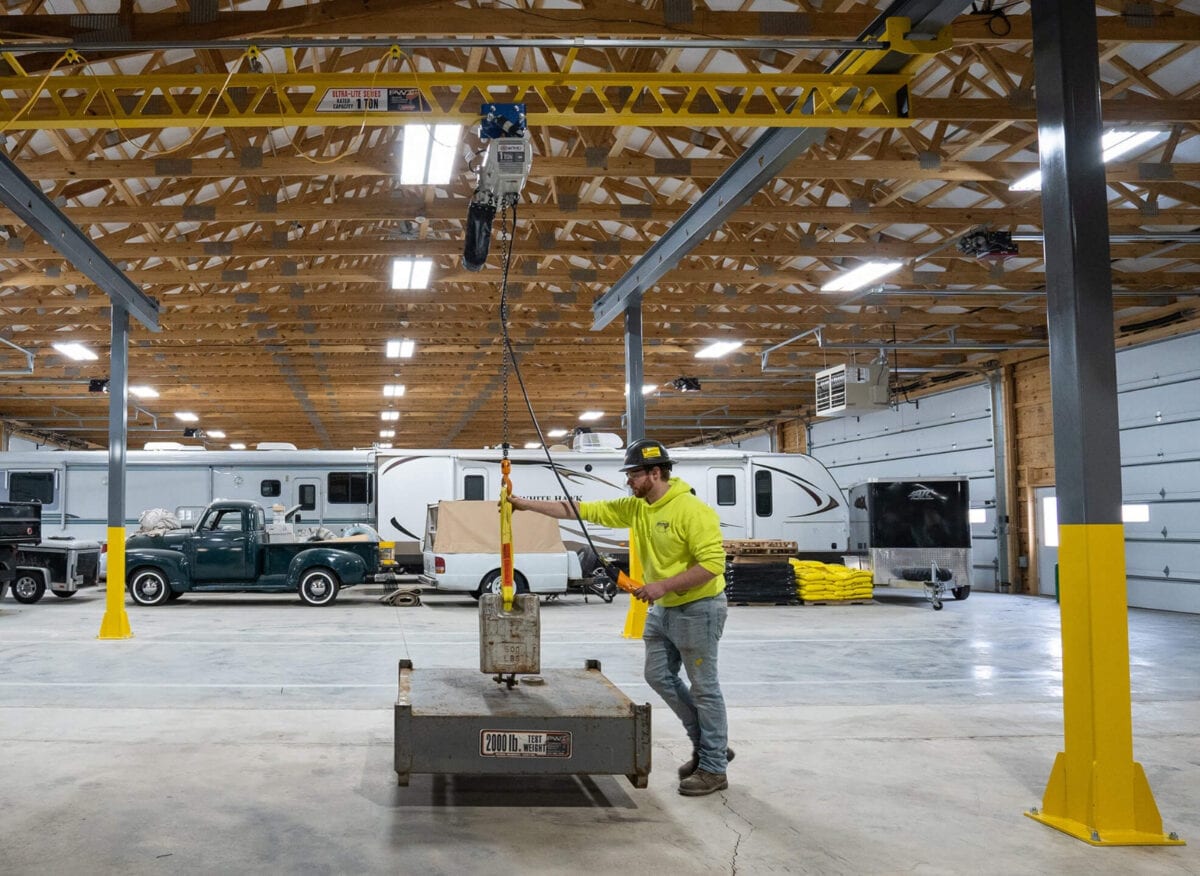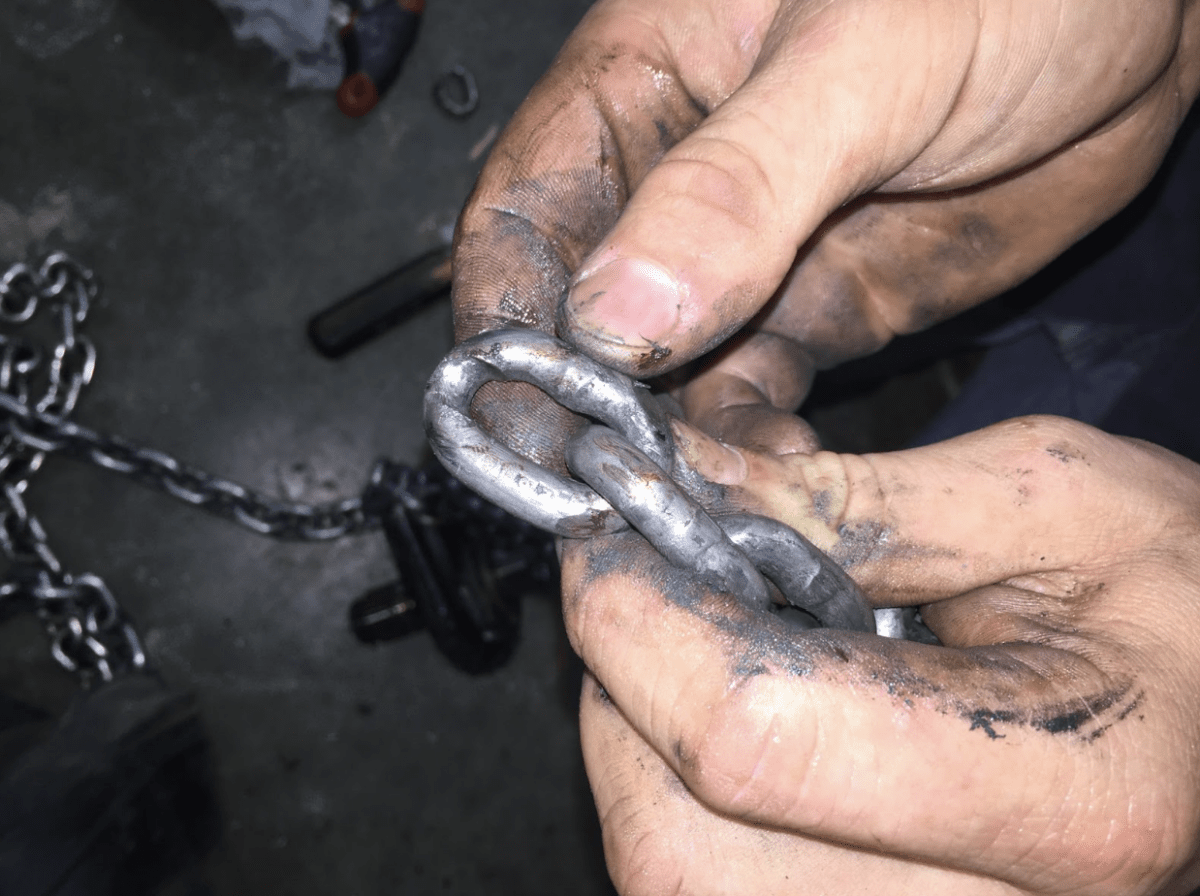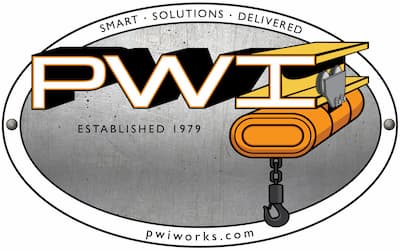When it comes to inspecting overhead cranes, there are a number of checks that need to be carried out at different intervals. Generally speaking, the checks can be categorized as either frequent or periodical, and this has a bearing on who will be required to perform the inspections.
Understanding this distinction is what we are going to explore more in this article, along with what specifically is included in these inspections.
Who Should Inspect an Overhead Crane?
According to OSHA (Occupational Safety and Health Administration) regulations, an employee of a plant or shop can be designated as the representative qualified to perform basic functional inspections on a frequent basis (OSHA 1910.179(a)(35).
More stringent annual inspections must be performed at least once a year by someone with the suitable qualifications and experience. Depending on the crane’s usage, more inspections may be required.
Why Should My Overhead Crane Be Inspected?
Overhead cranes are used to lift and maneuver heavy and often bulky loads around workspace environments shared with other personnel. The inevitably close proximity of people to the moving loads drastically increases the risk factor and is the prime reason why operational safety and regular inspections are necessary.
From a purely functional standpoint, regular inspections can identify any mechanical issues with the machinery at an early stage reducing the risk of costly equipment failures down the line. Not only could this represent a significant cost in repairs, but it can also have a knock-on effect in disturbing and even halting your entire operation.
Conducting regular overhead crane inspections can also be a preventative measure in ensuring the correct use of the machinery. By including inspections as a part of employee training, you can encourage a deeper understanding of the equipment to help reduce issues caused by improper use.
Arguably one of the most important reasons for crane inspections is also to ensure compliance with OSHA standards. Failure to keep your equipment up to code can result in costly penalties and indirect financial penalties by a disturbance to your business activities.
How Do I Inspect an Overhead Crane?
There are a few important things you need to know before carrying out an inspection on an overhead crane.
The first is to know what items specifically need to be inspected. Frequent inspections will include the operating mechanisms, hooks, and hoist chains to be conducted on a daily basis.

Monthly inspections will take a further look at the condition of these components to find signs of deterioration, deformation, cracking, and leakages. You would also include inspecting the hoist rope and reeving system.
The designated person for monthly inspections needs to complete a certification record that will include the date of the inspection and should always be accompanied by the signature of the person who has performed the inspection.
Crane operators are also strongly advised to look for any defects that might appear during the use of the machinery as this may fall between regular inspections and could cause issues down the line.
All deficiencies need to be carefully examined to determine whether they are reasonable or pose an immediate safety risk.
Are There Apps that Help Manage Inspections?
Yes! Crane inspection apps can go great lengths to help you comply with OSHA regulations and aiding in tracking any deficiencies that are discovered during inspections. Plus they can encourage accountability and aid in streamlining the inspection process by improving the ease and practicality of submitting inspection information and supporting documentation.
Our recommendation is the Inspectall app which works offline so that inspectors can operate without an internet connection and more efficiently because they do not need to wait for data to be transferred via the internet.
There is also an accompanying web application offering functionality to view site risk and exposure at a glance, track productivity, review forms, and set service priorities.
Some hoist manufacturers even offer data logging capabilities on newer hoist models that can be viewed using a laptop or tablet. For example, the CM Lodestar VS has a diagnostics and analytics system that enables quick and easy programming, maintenance, monitoring, and troubleshooting via an app. You can also plan inspections directly and predict when repairs and new equipment purchases will be required.
Types of Inspections
It is always advisable to conduct an initial inspection of the crane when it is new or has been altered in some way. Once the crane is in service, you will need to conduct both frequent and periodic inspections to ensure that critical components of the crane are functioning correctly and to identify signs of wear, deterioration, or malfunction.
Some examples of frequent daily inspections would include checking the hooks for deformation or cracks, and checking for deterioration or leakages in the lines, valves, and other parts that make up the pneumatic system.
Monthly inspections include hoist chains and end connections for excessive wear, distortion, or twisting. Equally, the same goes for running rope and end connections for wear and broken strands.
Another crucial part of each inspection should be ensuring proper (but not excessive) lubrication of the chain and changing the gear oil. This is considered both a preventative measure and a part of general maintenance that must be checked at each inspection. The frequency that you need to conduct this maintenance will depend on the duty cycle of the crane. Generally speaking, we would recommend chain lubrication and gear oil changes be done on a monthly basis, but it could be more often with a long duty cycle.
You can see a full list of frequent and periodic inspections here.
According to OSHA regulations, with regards to cranes, derricks, and material handling devices, such equipment must be inspected during initial use and then annually by a “competent person”. This person will be chosen by the site manager and they will need to demonstrate full working knowledge of the equipment.
Inspections can also be carried out by a government or private agency recognized by the U.S. Department of Labor. The site owner must always maintain a record of these inspections.
Get in touch with PWI directly or with any authorized PWI dealers for a recommended inspection resource.
What Is Included in an Inspection?

We have touched on the key points for inspecting an overhead crane, and compiled a full PDF list for you to refer to, but what do the specific signs of wear actually look like?
For these specific components, there are key signs to look out for that will indicate the potential for a safety hazard:
- Hooks: Deformation and cracks
- Hoist chains and end connections: Wear, twist, distortion.
- Running rope and end connections: Wear, broken strands.
- Rope reeving: Refer to the manufacturer’s recommendations.
- Members: Deformation, cracking, and corrosion.
- Bolts and rivets: Check for loose connections.
- Sheaves and drums: Cracking and signs of wear.
- Brake system: Check for excessive wear.
- Fossil fuel motors: Check the electrical systems.
- Chain drive sprockets and chain: Excessive wear.
- Load and wind indicators: Check for inaccuracies.
For smaller parts such as pins, bearings, gears, rollers, etc, be aware of visible signs of wear, cracking, and distortion. Unusual noises generated by any moving parts of an overhead crane will be a strong indicator that something is wrong and requires attention.
Last, but by no means least, make sure that you keeping up with chain lubrication and gear oil changes at least on a monthly basis.
Can I Get Trained to Inspect My Overhead Crane?
Yes, there are a number of courses available for you to become certified for overhead crane inspection. Courses will generally be between two and three days involving a combination of hands-on experience, a practical, and written evaluation.
An important note when you are searching for a course is to ensure that they comply with OSHA 1910.179 and ANSI B30.2 requirements which are specific to overhead crane inspection.
Still Have Questions?
Getting the most out of your workspace is important. It doesn’t matter if you have multiple plants or a small workshop in your garage.
We are committed to helping American businesses maximize production. Call our main office at (574) 646-2015 or fill out a service request form.


![New Construction vs Mezzanine [PDF]](https://pwiworks.com/wp-content/uploads/new-construction-vs-mezzanine-pdf-464x600.jpg)